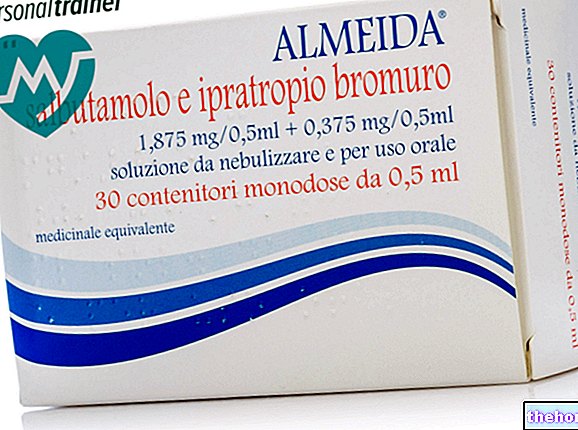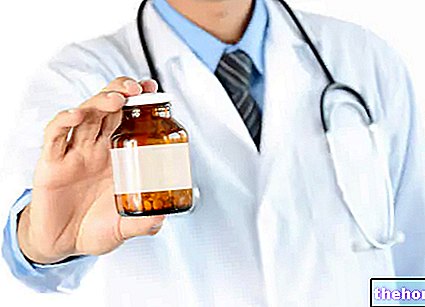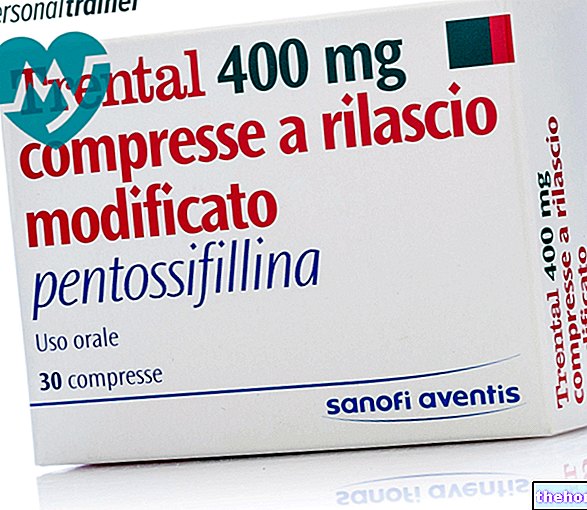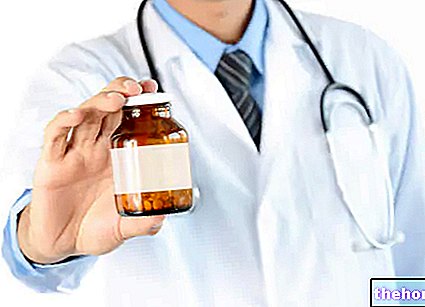Active ingredients: Testosterone enanthate
Testoviron 250 mg / ml prolonged-release solution for injection for intramuscular use
Indications Why is Testoviron used? What is it for?
Testoviron is used to replace testosterone in adult men, to treat various health problems due to testosterone deficiency (male hypogonadism). This condition must be confirmed with two separate blood testosterone measurements and must include clinical symptoms such as:
- impotence
- infertility
- poor sexual desire
- tiredness
- depressed mood
- bone loss due to low hormone levels
Contraindications When Testoviron should not be used
Do not use Testoviron
- if you are allergic to testosterone enanthate or any of the other ingredients of this medicine
- if you have androgen-dependent cancer (cancer) of the prostate or male mammary gland;
- if you have hypercalcaemia (excess calcium in the blood) secondary to malignant tumors;
- if you have or have ever had liver cancer;
- if you suffer from kidney disease;
- if you have high blood pressure;
- if you suffer from severe liver dysfunction.
Precautions for use What you need to know before taking Testoviron
Talk to your doctor or pharmacist before using Testoviron.
As a precaution, periodically undergo an andrological examination with rectal exploration of the prostate.
Before and during treatment, the doctor must carry out the following blood tests: testosterone levels in the blood, complete blood count.
If you have a predisposition to edema (swelling), your doctor will need to monitor you carefully, as treatment with androgens can increase your sodium and consequently fluid retention.
After use of Testoviron, benign and malignant liver tumors, which can cause life-threatening intra-abdominal bleeding, have been observed. of a liver tumor.
If you have severe heart, liver or kidney disease, treatment with Testoviron can cause serious complications in the form of water accumulation in the body, sometimes accompanied by (congestive) heart failure.
Tell your doctor if you have high blood pressure or are being treated for high blood pressure, as testosterone can cause your blood pressure to rise.
Older patients treated with androgens may have an increased risk of developing prostatic hyperplasia (enlarged prostate). Although there are no clear indications that androgens cause prostate cancer (prostate cancer), it is possible that they promote its growth if it is already present. Therefore, before prescribing therapy with testosterone preparations, your doctor will have to rule out the presence of prostate cancer.
Testoviron can cause "excessive sexual stimulation. If this happens, please contact your doctor.
If you are elderly, your doctor will carefully observe that this medicine does not cause you excessive and unwanted physical, nervous and mental stimulation.
Like all oily solutions, Testoviron should only be injected intramuscularly and very slowly. Pulmonary microembolism of oily solutions (small oily droplets in the arteries of the lungs) can result in signs and symptoms such as cough, difficulty breathing and chest pain. Other signs and symptoms may also appear, including malaise, sweating, dizziness, paraesthesia (altered sensation, for example, tingling) or fainting. These reactions may occur during or shortly after the injection and are reversible. Treatment consists of supportive measures, such as administration of oxygen.
If you suffer from sleep apnea (episodes of stopping breathing in sleep), this may be accentuated by the use of Testoviron.
Testoviron is not indicated for increasing muscle development in healthy individuals or for improving physical performance.
Testoviron must not be used in women as it can cause jaundice (yellowing of the skin and whites of the eyes) and signs of virilization, such as acne, abnormal hair growth in typical male areas of the body), voice changes .
For those who carry out sporting activities
The use of the drug without therapeutic necessity constitutes doping and can in any case determine positive anti-doping tests.
Children and adolescents
The use of Testoviron is not indicated in children and adolescents. In children, testosterone, in addition to having masculinizing effects, can have an effect on bone maturation, resulting in decreased growth in height.
Patients with impaired hepatic function
The use of Testoviron is contraindicated in patients who have or have had liver tumors (see "Do not use Testoviron").
Interactions Which drugs or foods can modify the effect of Testoviron
Tell your doctor or pharmacist if you are taking, have recently taken or might take any other medicines.
In particular, tell your doctor if you are taking the following medicines:
- phenobarbital (antiepileptic medicine), as it may reduce the effectiveness of Testoviron.
- coumarin derivatives (anticoagulants, used to thin the blood), because the doctor will closely monitor the coagulation parameters.
Testoviron can also modify the glucose tolerance test:
if you have diabetes ask your doctor for advice before taking Testoviron, as the dose of your insulin or oral antidiabetic medicines may need to be adjusted.
Warnings It is important to know that:
Fertility
Testosterone replacement therapy can reversibly reduce spermatogenesis (the production of spermatozoa).
Driving and using machines
Testoviron does not affect the ability to drive and use machines.
Testoviron contains castor oil
It can cause severe allergic reactions.
Dosage and method of use How to use Testoviron: Dosage
Always use this medicine exactly as your doctor or pharmacist has told you. If in doubt, consult your doctor or pharmacist.
This medicine is for intramuscular use only.
The oily solution should be injected very slowly (see "Warnings and precautions" and "Possible side effects"), immediately after being drawn into the syringe.
The recommended dose is:
- for the development and stimulation of androgen-dependent target organs and the initial treatment of deficiency symptoms: one 250 mg vial every 2 - 3 weeks.
- for the maintenance of an adequate androgenic effect: one 250 mg vial every 3 - 4 weeks.
In relation to individual needs, the doctor may decide to reduce the intervals between injections, while in many cases longer intervals, up to 6 weeks, are sufficient.
Before starting treatment, and from time to time, at the end of an interval between injections, your doctor will measure your blood testosterone levels. Levels below normal indicate the need to shorten the interval between injections, while this will need to be extended in the case of high levels.
Use in the elderly
No dose adjustment is required in elderly patients (see "Warnings and Precautions").
Overdose What to do if you have taken too much Testoviron
In case of accidental ingestion / intake of an overdose of Testoviron, notify your doctor immediately or go to the nearest hospital. No special therapeutic measures are necessary; your doctor will decide whether to stop treatment or reduce the dose.
If you have any further questions on the use of this medicine, ask your doctor or pharmacist.
Side Effects What are the side effects of Testoviron
Like all medicines, this medicine can cause side effects, although not everybody gets them.
Regarding the undesirable effects associated with the use of androgens, please also refer to the section "Warnings and precautions".
The most common side effects with Testoviron are pain at the injection site, erythema (redness) at the injection site, cough and / or dyspnoea (difficulty in breathing) during or shortly after the injection.
Commonly occurring side effects are: increased counts of red blood cells, hematocrit (percentage of red blood cells in the blood) and hemoglobin (the component of red blood cells that carries oxygen), shown by periodic blood tests.
Other side effects, for which the frequency cannot be estimated, are listed below:
- benign and malignant liver tumors,
- polycythemia (increased number of red blood cells in the blood),
- allergy,
- abnormal liver function tests,
- jaundice (yellowing of the skin and whites of the eyes),
- acne,
- alopecia (hair loss),
- rash,
- hives (itching and small spots on the skin),
- itch,
- different types of injection site reactions (pain, redness, hardness, swelling, inflammation),
- increased prostate specific antigen (PSA),
- increased or decreased sexual desire,
- gynecomastia (breast growth in males).
Injections of oily solutions such as Testoviron have been associated with generalized reactions: cough, difficulty breathing and chest pain. Other signs and symptoms may also appear, such as malaise, sweating, dizziness, paraesthesia (altered sensation, for example, tingling) or fainting.
The administration of testosterone in high doses or for prolonged treatments can induce states of anxiety, hypercalcemia (increase in the amount of calcium in the blood), water retention (accumulation of fluid in the tissues) and edema (swelling). if you show such a tendency and in particular if you have severe kidney or heart problems, have asthma, have epilepsy.
High doses of testosterone or its derivatives inhibit the secretion of gonadotropins (the hormones that stimulate the testes) resulting in testicular atrophy.
Prolonged and high-dose treatment with Testoviron inhibits spermatogenesis (the process of maturation of male germ cells, which ends with the formation of spermatozoa).
Contact your doctor if you experience frequent or persistent erections. Your doctor will decide whether to reduce the dosage or stop treatment, to avoid injury to the penis.
Reporting of side effects
If you get any side effects, talk to your doctor or pharmacist. This includes any possible side effects not listed in this leaflet. You can also report side effects directly via the national reporting system at www.agenziafarmaco.gov.it/it/responsabili. By reporting side effects you can help provide more information on the safety of this medicine.
Expiry and Retention
Keep this medicine out of the sight and reach of children.
Do not use this medicine after the expiry date which is stated on the carton after expiry. The expiry date refers to the last day of that month. The expiry date refers to the product in intact packaging, correctly stored.
Do not throw any medicines via wastewater or household waste. Ask your pharmacist how to throw away medicines you no longer use. This will help protect the environment.
What Testoviron contains
- The active ingredient is testosterone enanthate. One vial contains 250 mg of testosterone enanthate (corresponding to 180 mg of testosterone).
- The other ingredients are: benzyl benzoate, castor oil for injections.
What Testoviron looks like and contents of the pack
Testoviron is a clear and yellowish oily solution. It is available in packs (boxes) containing 1 ampoule of 250 mg / 1 ml
Source Package Leaflet: AIFA (Italian Medicines Agency). Content published in January 2016. The information present may not be up-to-date.
To have access to the most up-to-date version, it is advisable to access the AIFA (Italian Medicines Agency) website. Disclaimer and useful information.
01.0 NAME OF THE MEDICINAL PRODUCT
TESTOVIRON 250 MG / ML SOLUTION INJECTABLE WITH PROLONGED RELEASE FOR INTRAMUSCULAR USE
02.0 QUALITATIVE AND QUANTITATIVE COMPOSITION
A 1ml vial contains:
active ingredient: 250 mg of testosterone enanthate (corresponding to about 180 mg of testosterone)
excipients with known effects: castor oil.
For the full list of excipents, see section 6.1.
03.0 PHARMACEUTICAL FORM
Prolonged-release solution for injection.
Clear, yellowish oily solution.
04.0 CLINICAL INFORMATION
04.1 Therapeutic indications
Testosterone replacement therapy for male hypogonadism, when testosterone deficiency has been confirmed by the clinical picture and biochemical analyzes.
04.2 Posology and method of administration
Intramuscular use.
The oily solution should be injected very slowly (see sections 4.4 and 4.8), immediately after being drawn into the syringe.
Dosage
For the development and stimulation of androgen-dependent target organs and for the initial treatment of deficiency symptoms: 250 mg every 2 - 3 weeks.
To maintain an adequate androgenic effect: 250 mg every 3 - 4 weeks. Depending on individual needs, shorter intervals between injections may be necessary, while longer intervals of up to 6 weeks are sufficient in many cases.
Serum testosterone levels should be measured before starting treatment and occasionally at the end of an "interval between injections."Serum levels below normal indicate the need to shorten the interval between injections, while this should be extended in the case of elevated serum levels.
Additional information for particular categories of patients
Children and adolescents
The use of Testoviron is not indicated in children and adolescents (see section 4.4).
Elderly patients
The limited data available do not suggest the need for dose adjustment in elderly patients (see section 4.4).
Patients with impaired hepatic function
No formal studies have been conducted in patients with impaired liver function. The use of Testoviron is contraindicated in patients with previous or current liver tumors (see section 4.3).
Patients with impaired renal function
No formal studies have been conducted in patients with impaired renal function.
04.3 Contraindications
Hypersensitivity to the active substance or to any of the excipients listed in section 6.1.
Androgen-dependent cancer of the prostate or male mammary gland.
Hypercalcemia secondary to malignant tumors.
Previous or current liver tumors.
Kidney disease, hypertension, severe liver dysfunction.
04.4 Special warnings and appropriate precautions for use
There is limited experience on the safety and efficacy of the use of Testoviron in patients over the age of 65. There is currently no agreement on age-specific testosterone reference values. However, it must be considered that serum testosterone levels decrease physiologically with increasing age.
After use of Testoviron, benign and malignant liver tumors have been observed which can cause life-threatening intra-abdominal haemorrhage. liver tumor in the differential diagnosis.
Older patients treated with androgens may have an increased risk of developing prostatic hyperplasia. Although there are no clear indications that androgens cause prostate cancer, it is possible that they promote its growth if it is already present. Therefore, before starting therapy with testosterone preparations, it is necessary to exclude prostate cancer.
As a precaution, periodic rectal examinations of the prostate are recommended.
Testosterone levels should be monitored at baseline and at regular intervals during treatment. Physicians should adjust the dose on an individual basis from patient to patient to ensure maintenance of eugonadal testosterone levels.
In patients receiving long-term androgen therapy, the following laboratory parameters should also be monitored at regular intervals: hemoglobin and hematocrit, liver function parameters and lipid profile (see section 4.8).
In patients with severe cardiac, hepatic or renal insufficiency or ischemic heart disease, testosterone treatment can induce severe complications characterized by edema with or without congestive heart failure. If this occurs, treatment should be discontinued immediately. Caution is required in patients with a predisposition to edema, as treatment with androgens may increase sodium retention (see section 4.8).
Testosterone can cause an increase in blood pressure and Testoviron should be used with caution in hypertensive individuals.
If symptoms of sexual over-stimulation occur, treatment should be discontinued. In elderly subjects it must be carefully observed that the treatment does not cause undesirable nerve, mental and physical excessive stimulation.
In children, testosterone, in addition to having masculinizing effects, can accelerate bone growth and maturation, causing premature closure of the epiphyses and thus reducing final height.
Testoviron must not be used in women as jaundice and signs of virilization, such as acne, hirsutism, voice changes, may occur depending on the individual sensitivity to androgenic impulses.
Pre-existing sleep apnea can be potentiated.
Androgens are not indicated for increasing muscle development in healthy individuals or for increasing physical capacity.
Like all oily solutions, Testoviron should only be injected intramuscularly and very slowly. Pulmonary microembolism of oily solutions can result in signs and symptoms such as cough, wheezing and chest pain. Other signs and symptoms may also appear, including vasovagal reactions such as malaise, hyperhidrosis, dizziness, paraesthesia, or syncope. These reactions may occur during or shortly after the injection and are reversible. Treatment consists of supportive measures, such as administration of oxygen.
Important information about some of the ingredients
Testoviron contains castor oil which can cause severe allergic reactions.
04.5 Interactions with other medicinal products and other forms of interaction
Phenobarbital increases the hepatic metabolism of steroids, possibly reducing their effectiveness.
When Testoviron is administered concomitantly with coumarin derivatives, coagulation parameters should be closely monitored.
Androgens can modify the glucose tolerance test; therefore, their use in diabetic subjects in which it may be necessary to adjust the dosage of insulin and oral antidiabetic agents requires attention.
04.6 Pregnancy and lactation
Pregnancy and breastfeeding
Testoviron is intended for use in men only. The product is not indicated during pregnancy and lactation (see section 5.3).
Fertility
Testosterone replacement therapy can reversibly reduce spermatogenesis (see sections 4.8 and 5.3).
04.7 Effects on ability to drive and use machines
Testoviron does not affect the ability to drive and use machines.
04.8 Undesirable effects
Regarding undesirable effects associated with the use of androgens, please also refer to section 4.4.
The most common adverse reactions with Testoviron are injection site pain, injection site erythema, cough and / or dyspnoea during or shortly after injection.
Adverse reactions with common frequency are: hematocrit increased, red cell count increased, hemoglobin increased.
Tabulated list of adverse reactions
The following table reports adverse reactions from spontaneous reports and the scientific literature, for which it is not possible to estimate the frequency based on the available data.
§ The MedDRA preferred term is used to describe a particular adverse reaction, its synonyms and related conditions.
* Injection site pain, injection site erythema, injection site induration, injection site swelling, injection site inflammation.
Description of selected adverse reactions
Injections of oily solutions such as Testoviron have been associated with systemic reactions: cough, wheezing and chest pain. Other signs and symptoms may also appear, including vasovagal reactions such as malaise, hyperhidrosis, dizziness, paraesthesia, or syncope.
The administration of testosterone, including Testoviron, in high doses or for prolonged treatments can induce states of anxiety, hypercalcemia and increases the tendency to water retention and edema.
Therefore, caution is advised in subjecting to testosterone therapy those patients who show a similar tendency and especially those with renal or cardiovascular insufficiency, asthmatics and those with epilepsy.
High doses of testosterone or its derivatives suppress the secretion of gonadotropins with consequent atrophy of the interstitial tissue and seminiferous tubules of the testis.
Prolonged, high-dose treatment with Testoviron inhibits spermatogenesis.
If frequent or persistent erections occur in individual cases, the dosage should be reduced or treatment discontinued to avoid penile injury.
Reporting of suspected adverse reactions
Reporting of suspected adverse reactions occurring after authorization of the medicinal product is important as it allows continuous monitoring of the benefit / risk balance of the medicinal product. Healthcare professionals are asked to report any suspected adverse reactions via the national reporting system. "address www.agenziafarmaco.gov.it/it/responsabili.
04.9 Overdose
In the event of an overdose, no special therapeutic measures are required, other than interrupting therapy or reducing the dose.
Acute toxicity studies, however, show that testosterone enanthate, the ester contained in Testoviron, must be classified as non-toxic following a single administration. Even in the case of single administration of a dose several times higher than required for the purpose therapeutic no risk of toxicity is anticipated.
05.0 PHARMACOLOGICAL PROPERTIES
05.1 Pharmacodynamic properties
Pharmacotherapeutic group: Sex hormones and modulators of the genital system, androgens, 3-oxoandrostene derivatives
ATC code: G03BA03
Testoviron contains, as an active ingredient, testosterone enanthate, a derivative of the natural male sex hormone testosterone, and is therefore able to counteract the symptoms of androgen deficiency. The active form, testosterone, is formed by splitting the side chain.
05.2 Pharmacokinetic properties
Absorption
After intramuscular administration, the systemic availability of testosterone enanthate is complete. The compound is gradually released from the depot with a half-life of approximately 4.5 days and broken down into testosterone and enanthic acid. With a dose of 250 mg of testosterone enanthate, patients receive a total testosterone dose of 180 mg. By approximately 4 weeks after drug administration the release of testosterone from the depot is complete.
Distribution
Maximum testosterone concentrations of 20 ng / mL were measured between 1.5 and 3 days after IM administration. of 250 mg of testosterone enanthate to young men. Thereafter, plasma testosterone levels decreased with a half-life of approximately 4.5 days, which corresponds to the rate of release from the depot. Testosterone concentrations ≥ 2 ng / ml were maintained for 20 days, while concentrations ≥ 1 ng / ml were held for 26 days.
The binding of testosterone to serum proteins, particularly albumin and sex hormone binding globulin, is high.
Metabolism
Testosterone generated by hydrolysis from testosterone enanthate is metabolized and excreted like endogenous testosterone. The absolute bioavailability of testosterone from the ester is nearly complete, indicating rapid and efficient "ester hydrolysis". Enanthic acid is metabolized by β-oxidation like other aliphatic carboxylic acids.
Elimination
The metabolic clearance of testosterone is 16 ± 7 ml / min / kg and is related to hepatic and extrahepatic metabolism. Testosterone metabolites are eliminated with a half-life of 7.8 days, approximately 90% via the kidney and 10% via the bile.
Steady state
Injection of 250 mg of testosterone enanthate every 3-4 weeks does not result in a clinically relevant accumulation of testosterone in serum.
05.3 Preclinical safety data
Acute toxicity
As with steroid hormones in general, the acute toxicity of testosterone is very low.
Chronic toxicity
From the investigations on systemic tolerability following repeated administration, no data emerged that would advise against the use of the active ingredient at the doses necessary for therapy.
Mutagenic and carcinogenic potential
Mutagenicity studies in vitro with the testosterone released from the ester have not provided indications of a mutagenic potential. No studies have been conducted to evaluate a possible carcinogenic effect of Testoviron following repeated administration. These studies were not considered necessary, since systemic tolerability studies for repeated administration for 6 months in rats and dogs no indications of a carcinogenic effect emerged.
Reproductive toxicity
Preclinical fertility studies on possible damage to germ cells have not been conducted. Preclinical studies show a "central inhibition of spermatogenesis and oogenesis.
Local tolerability
Local tolerance studies after intramuscular administration have shown that testosterone enanthate does not increase the irritative effect caused by the solvent alone. Investigations conducted with the oily solvent of Testoviron did not reveal a sensitizing effect. No further investigations on the solvent were performed. sensitizing effect of testosterone enanthate. No obvious sensitizing effect has been demonstrated.
06.0 PHARMACEUTICAL INFORMATION
06.1 Excipients
Benzyl benzoate, castor oil for injections.
06.2 Incompatibility
None.
06.3 Period of validity
5 years.
06.4 Special precautions for storage
This medicine does not require any special storage conditions.
06.5 Nature of the immediate packaging and contents of the package
Each Testoviron package contains a glass vial, hydrolytic class I sec. F.U., 1 ml.
06.6 Instructions for use and handling
No special instructions.
07.0 MARKETING AUTHORIZATION HOLDER
Bayer S.p.A. - Viale Certosa, 130 - 20156 Milan
08.0 MARKETING AUTHORIZATION NUMBER
A.I.C. n. 002922060
09.0 DATE OF FIRST AUTHORIZATION OR RENEWAL OF THE AUTHORIZATION
10 June 1953/01 June 2010
10.0 DATE OF REVISION OF THE TEXT
AIFA determination of 04/2015




























